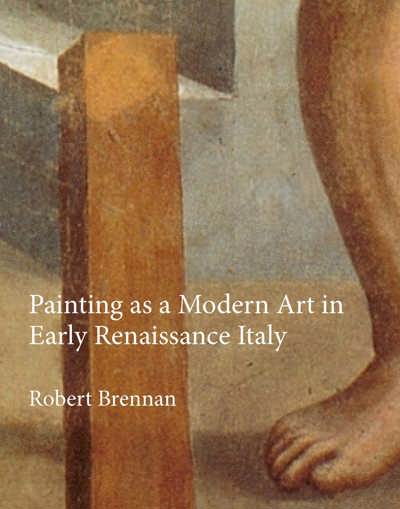
Painting as a Modern Art in Early Renaissance Italy
Robert Brennan
- Pages: 366 p.
- Size:220 x 280 mm
- Illustrations:11 b/w, 115 col., 1 tables b/w.
- Language(s):English
- Publication Year:2020
- € 125,00 EXCL. VAT RETAIL PRICE
- ISBN: 978-1-912554-00-3
- Hardback
- Available
What did it mean for art to be "modern" before the period we regard as Modernity today?
“This is a fabulous read that, (…) certainly exhausts its chosen textual examples through minute, focused analysis and multiple tangential excursions (…) This beautifully produced, hefty, dense, and handsome book is a lively and rewarding excursion into early Renaissance concepts of modernity in art.” (Esther Theiler, in Parergon, 39/2, 2022, p. 154)
“The volume is extremely well produced. It is sumptuously illustrated with crisp color pictures. The prose flows, and all texts are translated in the main body text while footnotes contain the original language texts, allowing the reader to follow some of the more philological moments in the book’s argument.” (Christopher J. Nygren, in Contemporaneity, 9/1, 2021, p. 107)
Concepts of modernity have played a constitutive role in the canon of European art history at least since Giorgio Vasari, who looked back upon Giotto as the founder of “modern art” (arte moderna). The aim of this book is to establish a prehistory of Vasari’s view. Was Vasari merely projecting a sixteenth-century concept of artistic modernity onto the fourteenth and fifteenth centuries, or were the artists of that period guided by some notion of modernity as well?
Brennan argues that discussions of “modern art” were in fact widespread during Giotto’s time, according to the broad, medieval definition of “art” (ars) that encompassed activities as diverse as arithmetic, poetry, carpentry, music, and preaching. Within this discourse, to make an art “modern” meant setting it on a new foundation in “science” (scientia) and rationalizing it accordingly. By the year 1400, Florentine writers such as Cennino Cennini and Franco Sacchetti were applying these same terms and principles to Giotto. In doing so they shed light not only on the structure of artistic development in the fourteenth century, but also on the way Giotto’s legacy shaped the prerogatives of artists in the early fifteenth – that is, in the generation of Brunelleschi, Donatello, and Masaccio.





